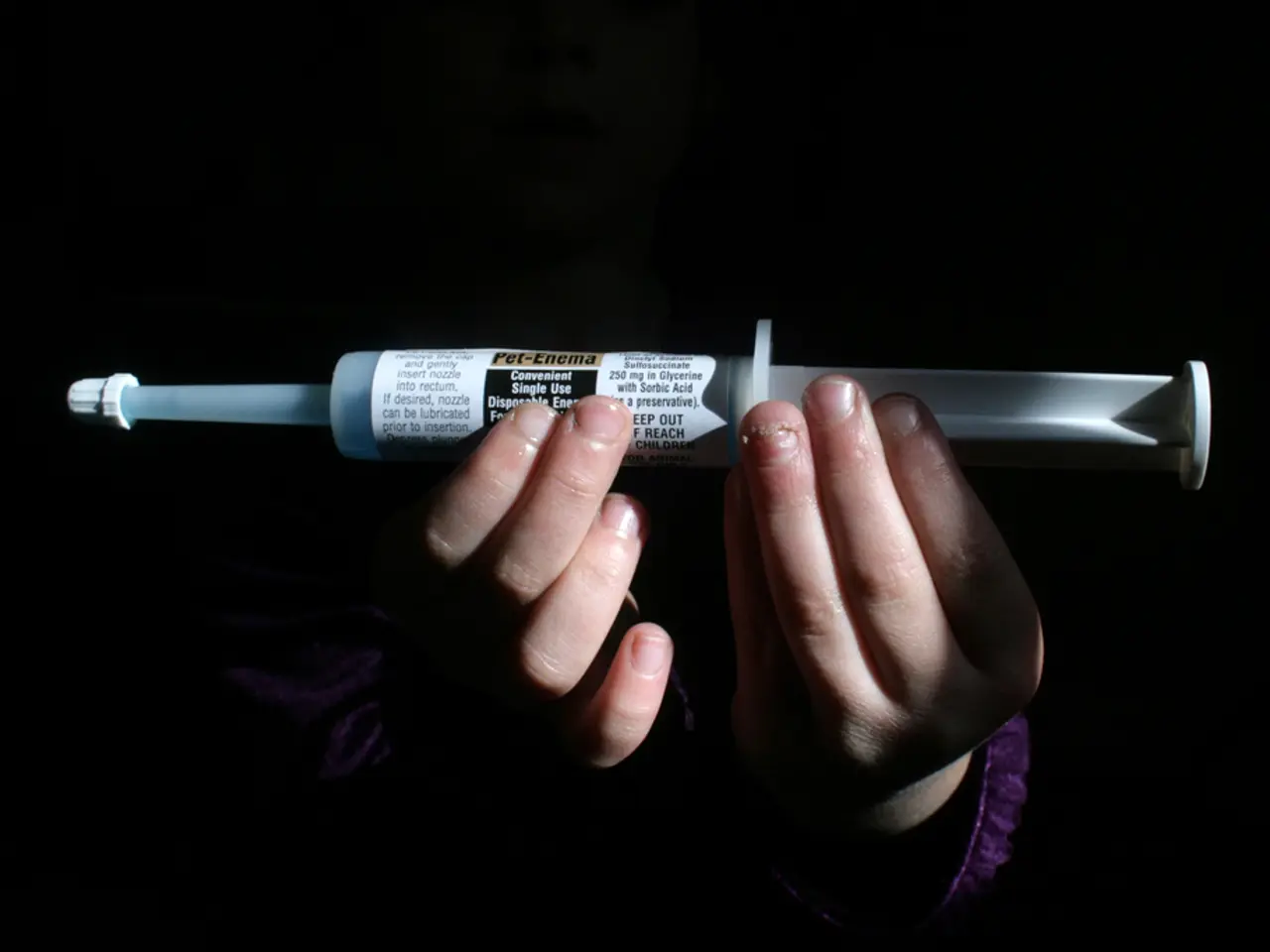Nplate Dosage Information: Forms, Potencies, Administration Methods, and Additional Details
Managing a chronic condition like ITP in children can be challenging, but a reliable treatment option is available in the form of Nplate (romiplostim), a thrombopoietin receptor agonist. Here's a simplified guide to the typical dosage for children with ITP.
Nplate treatment in children usually begins with a dosage of 1 microgram per kilogram (mcg/kg) administered subcutaneously once a week. The dose is adjusted on a weekly basis, depending on the child's platelet response. The maximum dose should not exceed 10 mcg/kg per week.
This dosing guideline is in line with pediatric recommendations for chronic ITP treatment using Nplate. It has been found to be effective and safe for increasing platelet counts in children, reducing the risk of bleeding [5].
For younger pediatric patients, such as those between 1 to 5 years old, another thrombopoietin receptor agonist called eltrombopag may be considered. However, Nplate dosage involves weight-based subcutaneous injections [1].
It's important to note that first-line treatments for ITP in children often include corticosteroids or intravenous immunoglobulin (IVIG). Nplate is typically given after other therapies have been tried or in chronic cases as a maintenance therapy to maintain safe platelet counts [2][5].
Monitoring of platelet counts and liver function tests is crucial during therapy with thrombopoietic receptor agonists to ensure a balance between efficacy and safety [1].
Nplate is given as a long-term treatment for ITP. If platelets don't increase to a safer level after four weeks at the highest weekly dose, treatment may be stopped. Nplate is given as a subcutaneous injection, usually in a healthcare setting, at one of the recommended injection sites: abdomen, upper arm, or thigh.
Remember, it's always crucial to consult a doctor or healthcare professional before taking any medication. If a Nplate dose is missed, contact the doctor's office immediately to reschedule.
For emergencies such as hematopoietic syndrome of acute radiation syndrome in adults, the typical dose of Nplate is 10 mcg/kg of body weight, given as a single subcutaneous injection as soon as possible after radiation exposure.
References:
- National Organization for Rare Disorders (NORD) (2021). Nplate. [online] Available at: https://rarediseases.org/diseases/nplate/
- American Society of Haematology (ASH) (2020). 2020 Revised Updated Recommendations for the Diagnosis, Risk Stratification, and Management of Adult Patients with Chronic Immune Thrombocytopenia. [online] Available at: https://ashpublications.org/blood/article/136/1/1/136120/2020-Revised-Updated-Recommendations-for-the-Diagnosis
- European Hematology Association (EHA) (2019). Updated EHA recommendations for the diagnosis, risk stratification, and management of chronic immune thrombocytopenia in adults. [online] Available at: https://www.ehaweb.org/media/3626/eha33-chronic-immune-thrombocytopenia-adults.pdf
- National Institutes of Health (NIH) (2021). Immune Thrombocytopenia. [online] Available at: https://www.ncbi.nlm.nih.gov/books/NBK470338/
- American Academy of Pediatrics (AAP) (2019). Immune Thrombocytopenia. [online] Available at: https://www.aap.org/en-us/advocacy-and-policy/aap-health-initiatives/immune-thrombocytopenia/Pages/default.aspx
- In the world of medical-conditions, other blood cell disorders like ITP sometimes require therapies-and-treatments, such as Nplate, a drug often used for children with ITP.
- Pharmacies, in collaboration with healthcare professionals, can provide Nplate, a drug that stimulates blood cell production, which is essential for the health-and-wellness of children with ITP.
- While managing blood cell disorders in children, science has developed drugs like Nplate to help control the condition, but it's imperative to remember that other conditions, such as blood cell disorders, may require distinct therapies.
- During the treatment of blood cell disorders in children, it's critical to monitor closely the child's platelet response, liver function, and overall health, as the use of drugs like Nplate can have implications on these aspects.






